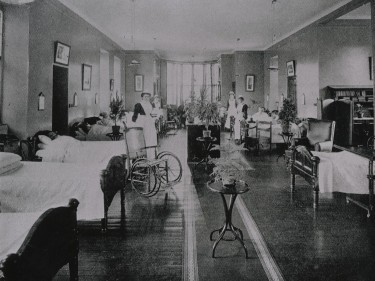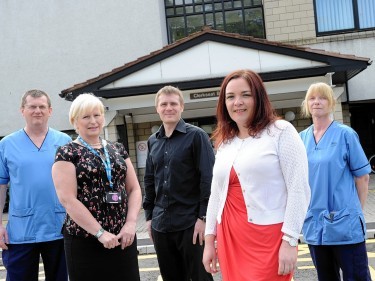They are the ever present caretakers of the ill and vulnerable and have brought the sick and weary back to health for generations.
Braving disease, poverty, war and adversity, nurses have always been on the frontline of medical care in the north-east.
And today, on the birthday of the profession’s most famous practitioner, the contribution they make to society is being celebrated around the world on International Nurses Day.
Florence Nightingale, who died in 1910 at the age of 90, is universally recognised as the founder of modern nursing.
Before the profession as we know it came into being in the 19th century, nuns and the military provided a similar kind of care.
The Crimean War, which was fought from October 1853 to February 1856, was a catalyst for modern nursing when Florence laid down the foundations of modern nursing in the book Notes on Nursing.
Fast forward to today and one of the areas of healthcare that has undergone some of the biggest change is mental health.
When Aberdeen’s infirmary opened in 1739 it was to provide treatment for people “deprived of the use of their reason”, in the hope that they could then lead normal lives.
A Bedlam Fund had been established in 1718 and the money from it was given to the infirmary managers to help fulfil this wish.
Six bedlam cells were built and for more than 50 years psychiatric patients were accommodated in part of the infirmary building.
By the end of the 18th century the infirmary managers felt it was “attended with very great inconvenience and prejudices to sick patients to have those who are under mental derangement lodged within the same house”.
A small asylum was built at Barkmill, part of the lands of Clerkseat. This hospital, which was to grow into the present-day Royal Cornhill Hospital, opened on November 8, 1800 and was called the Royal Lunatic Asylum.
The facility is now the main training centre for medical and nursing staff who work in mental health.
Heather Harvey, team leader and psychiatric nurse, has spent four decades nursing at Royal Cornhill.
The 56-year-old, who is retiring later this year, started working as an auxiliary nurse in January 1974 aged just 16, and underwent the majority of her training at Woodend Hospital.
She transferred to the Cornhill facility in 1976, when she was halfway through her training.
She said: “I had worked with the disabled a lot at Woodend which led me to working at Cornhill. I did a placement and I liked working with mental health patients. I wanted to be a nurse from a very young age, it is just something I always knew I wanted to do.”
One of the biggest differences she recalls about the treatment of patients was that there was less individual care.
She said: “All the patients were very well cared for, but it was like one size fits all. Even when the tea was made it was all in one big pot. But there was a lot of fun in the wards and a lot of good companionship.
“Long ago we did more in different ways with the patient, and there were things like sports day and lots of activities where the patients could work.”


